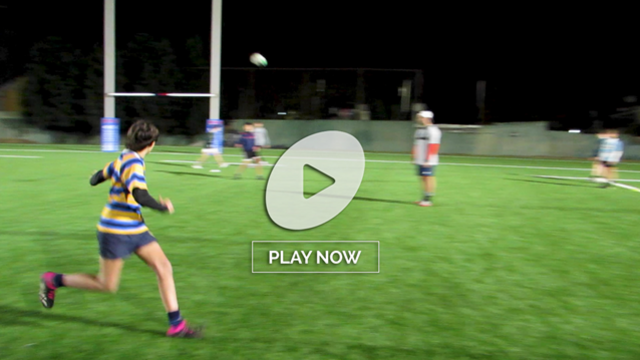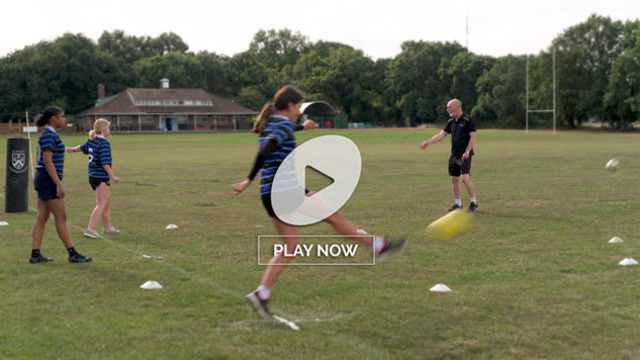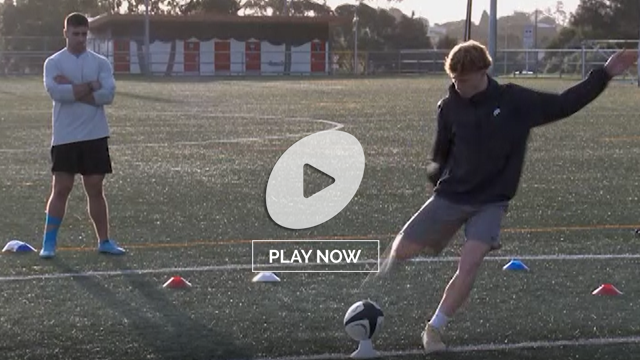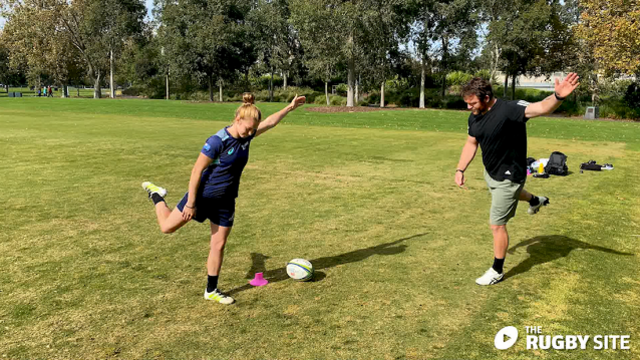Where is the sweet spot for the box kick?
One of the sage pieces of advice for a defending side remains, to this day: “Use the touch-line as your friend”. In other words, drive the attacking players towards the side-line, and the threat of stepping over it and turning over possession is the equivalent of having an extra, invisible defender.
There are specific situations where the touch-line is most definitely not the defence’s friend, however, and most of these are connected with the kicking game. The nearer to touch the attack can pin down a defender with the kick, the narrower their options in reply will be.
This is particularly true of the box kicking game off number 9, which is such a common feature of exit strategy in the modern game.
The answer to the question, “What is the most awkward spot for the receiver to defend a box-kick?” is unquestionably “In the near-side 5 metre corridor”. This is the scenario in which the side-line is at its most inhospitable to the receiving team.
In addition to his focus on catching the ball under challenge, the receiver has to consider where he can position him/herself to without being pushed out over the side-line, and whether the flight of the ball will take it out on the full and therefore it is a safe ‘leave’. Questions, questions – which all have to be resolved in the space of five seconds or less!
Let’s take a look at some recent examples from the start of the Super Rugby AU competition in Australia. The 5-metre box kick demands great accuracy from the kicker, and there are few better than the Brumbies scrum-half Nic White:
The number 9 is typically standing on the 15-metre line when he delivers the kick, so the technique involves moving the ball in the air rather like a golfer with his/her drive off the tee: ‘drawing’ or hooking the ball back over his own shoulder (on the left side of the field for a right-footed kicker), or ‘fading’ it in the opposite direction on the other side of the pitch. In this instance, White finds a landing zone no more than one metre in from touch.
Where should the defensive backfield position themselves in order to receive the kick? In this case, the Force full-back (Rob Kearney) is standing deep, and starts his run towards the ball from the halfway line:
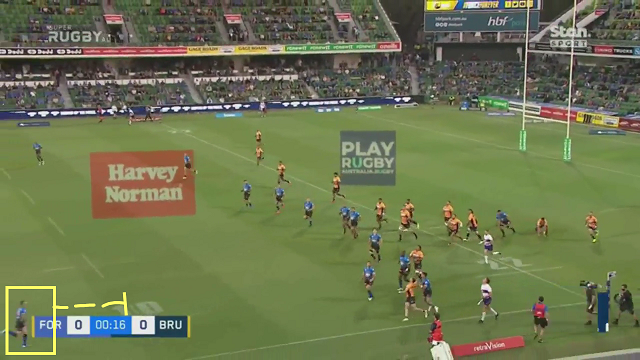
When the full-back stays deep, he is unable to contest a shorter kick at its point of descent (inside the 40m line). Kearney is still five metres adrift when the ball is successfully regathered by the Brumbies’ chaser.
The second example shows the box-kick (by the Force’s Tomas Cubelli) drifting the ball from left to right on the opposite side of the field:
In this instance the kick passes the 40m line, but the problem of positioning for the full-back remains. With the landing zone again within the 5m corridor, the receiver (the Waratahs’ Mark Nawaqanitase) is trying to move from outside-to-in, in order to achieve the twin of aims of catching the ball while staying infield.
In the event his running line is shut down, and he is crowded out by the sheer volume of bodies in such a narrow ‘receiving box’:
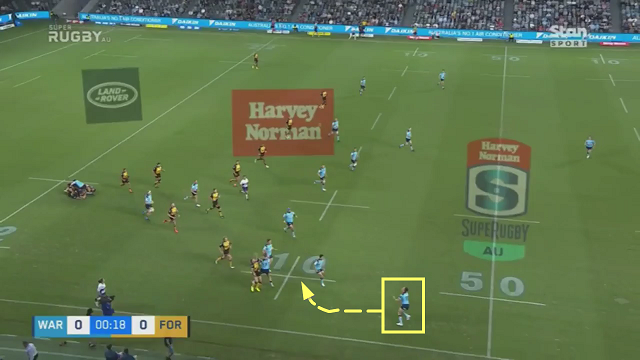
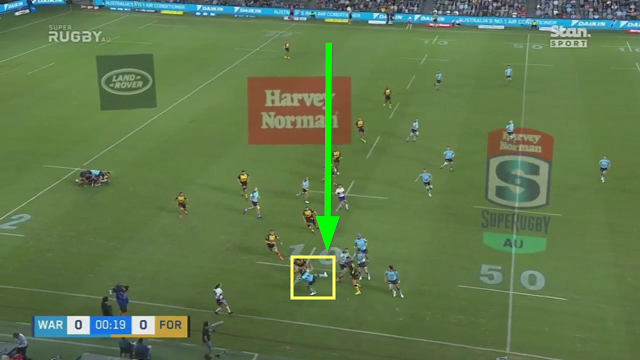
The final example comes from the game between the Brumbies and the Waratahs, with Nic White again providing the template:
Here the kick is much longer, travelling all the way to the halfway line in the air. But any idea that this might make the full-back’s job easier is quickly dispelled. The Waratahs number 15 (Jack Maddocks) is still in two minds: catch the ball, and risk being shoved into touch by a flying Brumbies’ chaser? Or, let the ball bounce and risk the ball kicking infield instead of going out? Questions, questions.
In the event, Maddocks chooses the second option, and a wicked bounce sends the Waratahs tumbling all the way back down the field. At the critical moment, Maddocks has one foot in the field of play, and the other outside it:

While it is quite possible to pose problems for the defensive team by varying the length and hang-time of a box-kick, even more problems can be created by hitting the landing zone in the 5-metre corridor consistently. The ball descending close to touch gives the full-back a lot of questions to answer in a short time-frame. The questions of depth of positioning, of fielding or leaving, of finding a running line on to the ball without being jammed into touch, are all very much ‘alive and kicking’.



